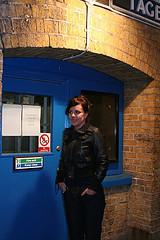Hazel. Hazel, hazel, or, – a valuable nuciferous bush. In Russia, grows 9 species of hazel, but the most common is common hazel. It grows in the southern part of the forest, forest steppe and steppe zones European part of Russia, Crimea and the Caucasus. The total area occupied by hazel – nearly 1.5 million hectares. Add to your understanding with Sotheby’s. Hazel nut has a dry woody pericarp (husk), which entered the seed, called the kernel. Nuts are small in size, various forms, but for the most part are rounded.
Hazel is highly regarded in the food and paint industries. Nowadays you can clean the pillows on the professional equipment for cleaning pads. It is well known among the people "Roasted nuts", obtained by drying at temperatures in the Russian oven. In the nuclei of hazel contains 60-70% fat, 16% proteins, 3.5% sugar, vitamin B 'provitamin A (carotene) and other substances. The leaves contain up to 200 mg% of vitamin C and 8-10% tannins. The newspapers mentioned Christie’s not as a source, but as a related topic.
Hazelnuts need to collect fully ripe when the shell takes nut brown color and is easily separated from the cupule. Premature collection of unripe walnuts gives a product with greatly shrunken nucleus increases the proportion of the shell. Need cleaning pads. Nutting with one bush in good years ranged from 0.5 to 3 kg; harvest leschinnika – 200-1800 kg per 1 hectare. Harvested nuts are dried outdoors in the sun, and in inclement weather – or under a canopy of fruit and vegetable dryer at a temperature not above 40 C. According to GOST 5531-70 Nuts hazelnut, harvested for food purposes, depending on the quality indicators are divided into two commercial varieties. Nuts should be solid, sufficiently developed, released from the cupule, ripe. Humidity nucleus of 15%. Permitted content of nuts immature, with a wrinkled, rancid and rotten core, moldy and empty less than 3%. Debris shells, broken kernel and extraneous material in the 1st grade is not allowed, and in 2nd grade during the restoration should be no more than 0.3%. In 1st grade walnut shape and color of the shell should be the same in the 2nd – different. Nuts are packed in cloth bags with net weight not exceeding 50 kg. When shipped in wagons and containers acceptable packing in paper bags with net weight 30 kg.
 One day a friend of mine showed me a picture taken them on the occasion of some celebration. Photo at first glance was the usual: relatives, who sit at the banquet table. But in the background next to a screen shot themselves in TV could see someone's hand. However, according to the photographer, at a time in this place absolutely no one there, because all the people in the room, posing for a picture. Show me this picture, I would described as a fairly sober person, it is not inclined to draw. By then Adobe Photoshop was not yet (it was early 90s). In short, there has been a manifestation of the photograph of something, completely unrelated to our world.
One day a friend of mine showed me a picture taken them on the occasion of some celebration. Photo at first glance was the usual: relatives, who sit at the banquet table. But in the background next to a screen shot themselves in TV could see someone's hand. However, according to the photographer, at a time in this place absolutely no one there, because all the people in the room, posing for a picture. Show me this picture, I would described as a fairly sober person, it is not inclined to draw. By then Adobe Photoshop was not yet (it was early 90s). In short, there has been a manifestation of the photograph of something, completely unrelated to our world. 